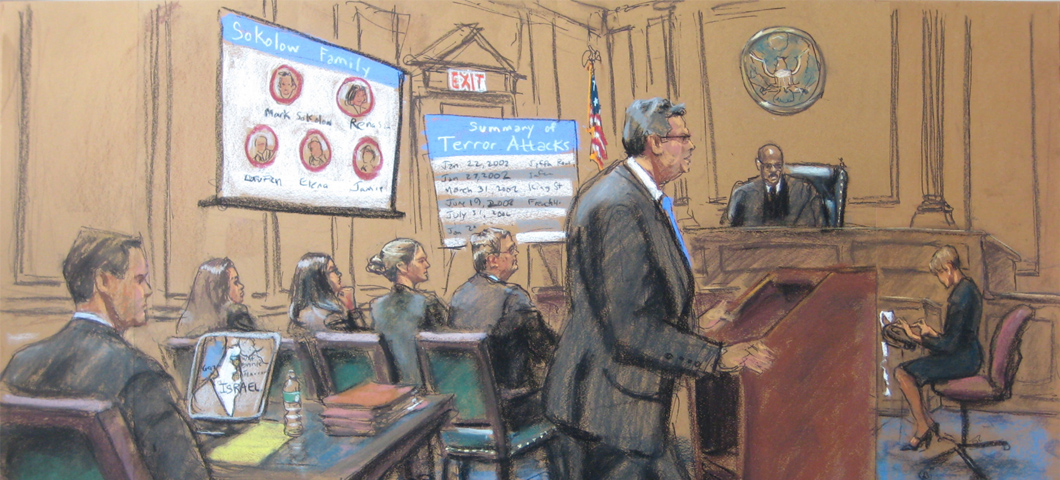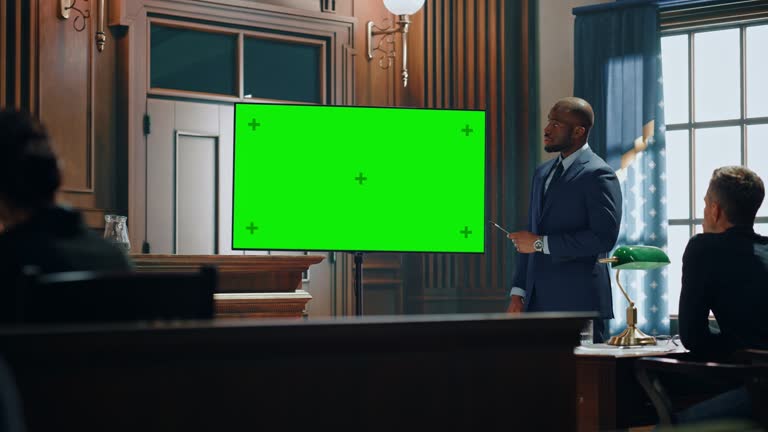Top Techniques for Creating Impactful Trial Presentations in Courtroom Settings
Top Techniques for Creating Impactful Trial Presentations in Courtroom Settings
Blog Article
Navigating the Intricacies of Trial Presentations: Tips for Seamless Distribution and Engaging Debates
In the realm of legal proceedings, the art of test discussion stands as a vital component of success. As attorneys navigate the detailed web of court characteristics, the capability to perfectly supply arguments and evidence while captivating the jury's focus comes to be extremely important. The complexities integral in trial presentations call for a fragile balance of strategy, skill, and ability. By refining methods that make sure a sleek distribution and crafting engaging arguments that resonate with the target market, attorneys can considerably enhance their campaigning for. In a world where persuasion preponderates, grasping the details of test discussions is not simply an option yet a requirement for those looking for to dominate in the courtroom.

Comprehending Test Objectives
To properly browse a trial, it is important to have a clear understanding of the goals that require to be accomplished. Prior to tipping into the court room, legal groups have to specify their goals and desired results. These purposes act as assisting concepts throughout the trial, forming techniques and influencing decision-making procedures.
Comprehending test goals involves an extensive analysis of the instance, legal precedents, and the client's benefits. Trial Presentations. It requires a precise assessment of the realities, recognizing key issues, and expecting potential difficulties. By establishing quantifiable and specific objectives, lawyers can tailor their arguments and discussions to straighten with the wanted results
Moreover, a clear grasp of trial objectives makes it possible for legal groups to prioritize evidence, witnesses, and legal debates effectively. It enables the advancement of a systematic story that reverberates with the discretionary, reinforcing the total instance discussion.

Organizing Proof Successfully
Having a clear understanding of test goals lays the structure for arranging evidence properly in legal process - Trial Presentations. By aligning the presentation of proof with the wanted end results of the trial, legal teams can reinforce their debates and enhance their persuasiveness. One crucial aspect of arranging evidence is classification. Organizing evidence based on styles or relevance to details legal components can help streamline the discussion and make intricate information more absorbable for the court or jury.
One more crucial element in arranging evidence successfully is establishing a sensible circulation. Offering proof in a coherent and consecutive way can aid build a compelling narrative that sustains the lawful debates being made. Furthermore, making use of aesthetic help such as graphes, timelines, or charts can even more improve the company of proof and aid in making clear complicated partnerships or sequences of occasions.
Additionally, guaranteeing that all proof offered is appropriate and acceptable to the case is necessary. Unimportant or inadmissible evidence can interfere with the stamina of the debate and potentially harm the reputation of the here and now celebration. A thorough review and option procedure need to be undertaken to include only the most impactful and legally audio proof in the test discussion.
Crafting Convincing Narratives
Crafting engaging narratives plays a crucial duty in providing persuasive arguments throughout lawful process. A well-crafted story has the power to astound the target market, evoke emotions, and eventually persuade the choice for the providing party. When creating a narrative for a test discussion, it is important to establish a clear story that highlights bottom lines and connects them in a systematic manner. Begin by describing the truths of the instance in a compelling manner, making sure that the sequence of events is very easy to follow. Present characters properly, supplying history details that assists the target market recognize their activities and motivations. Furthermore, incorporating dazzling summaries and interesting language can bring the narrative to life, making it a lot more unforgettable for the discretionary. By weaving with each other evidence, testimony, and lawful debates right into a natural and convincing narrative, legal experts can effectively support for their clients and increase the possibility of a positive outcome in the court.
Mastering Aesthetic Aids
Efficient use visual help is crucial to enhancing the influence and clarity of trial discussions. Aesthetic aids, when used strategically, have the power to simplify complicated information, strengthen bottom lines, and leave an enduring impression on the judge and jury. To master aesthetic help in trial discussions, it is critical to make sure that they are clear, succinct, and relevant to the arguments being made.
When including visual help, such as charts, timelines, photographs, or graphs, right into a test discussion, it is necessary to maintain them visually appealing yet expert. The visuals must match the spoken arguments, providing a graph of the details being reviewed without overwhelming the target market important source with unneeded details.
In addition, experimenting the aesthetic aids beforehand is important to guarantee a smooth distribution throughout the test. Acquainting oneself with the content, changes, and timings of each visual help can assist maintain the flow of the presentation and avoid technological glitches that may arise.
Providing Impactful Closing Arguments
A compelling closing argument functions as the conclusion of a test presentation, enveloping the core narrative and persuading the court and court in the direction of a positive choice. To supply an impactful closing debate, it is critical to succinctly wrap up bottom lines, highlight the staminas of your case, and attend to any type of weaknesses in a tactical way. Begin by outlining the main debates that support your client's setting, stressing why the proof offered throughout the test supports your narrative. It is necessary to develop a sense of communication and quality, assisting the discretionary in the direction of the desired verdict.
In addition, incorporating sob i loved this story can additionally enhance your closing argument. By humanizing the case and linking on an individual degree with the decision-makers, you can evoke compassion and understanding, affecting their understanding of the truths provided. Furthermore, restating the lawful criteria that must be navigate to this site met for a desirable ruling can enhance the legitimacy of your placement. Eventually, a well-crafted closing disagreement ought to leave a long-term perception, engaging the discretionary to rule in your client's favor.
Verdict
Finally, understanding test discussions involves recognizing goals, organizing proof, crafting stories, using aesthetic help, and supplying impactful closing arguments. By executing these strategies effectively, legal representatives can provide their instance seamlessly and make compelling debates in the court. It is important to browse the complexities of test presentations with accuracy and skill to accomplish success in lawful proceedings.
By aligning the presentation of proof with the desired results of the test, lawful groups can enhance their disagreements and enhance their persuasiveness (Trial Presentations). To grasp aesthetic aids in trial presentations, it is crucial to make sure that they are clear, succinct, and appropriate to the debates being made
An engaging closing debate serves as the culmination of a trial presentation, enveloping the core narrative and persuading the court and jury towards a positive choice. Begin by describing the primary disagreements that sustain your client's position, stressing why the proof offered throughout the test supports your narrative.In conclusion, grasping trial presentations includes comprehending objectives, arranging evidence, crafting stories, making use of aesthetic aids, and delivering impactful closing arguments.
Report this page